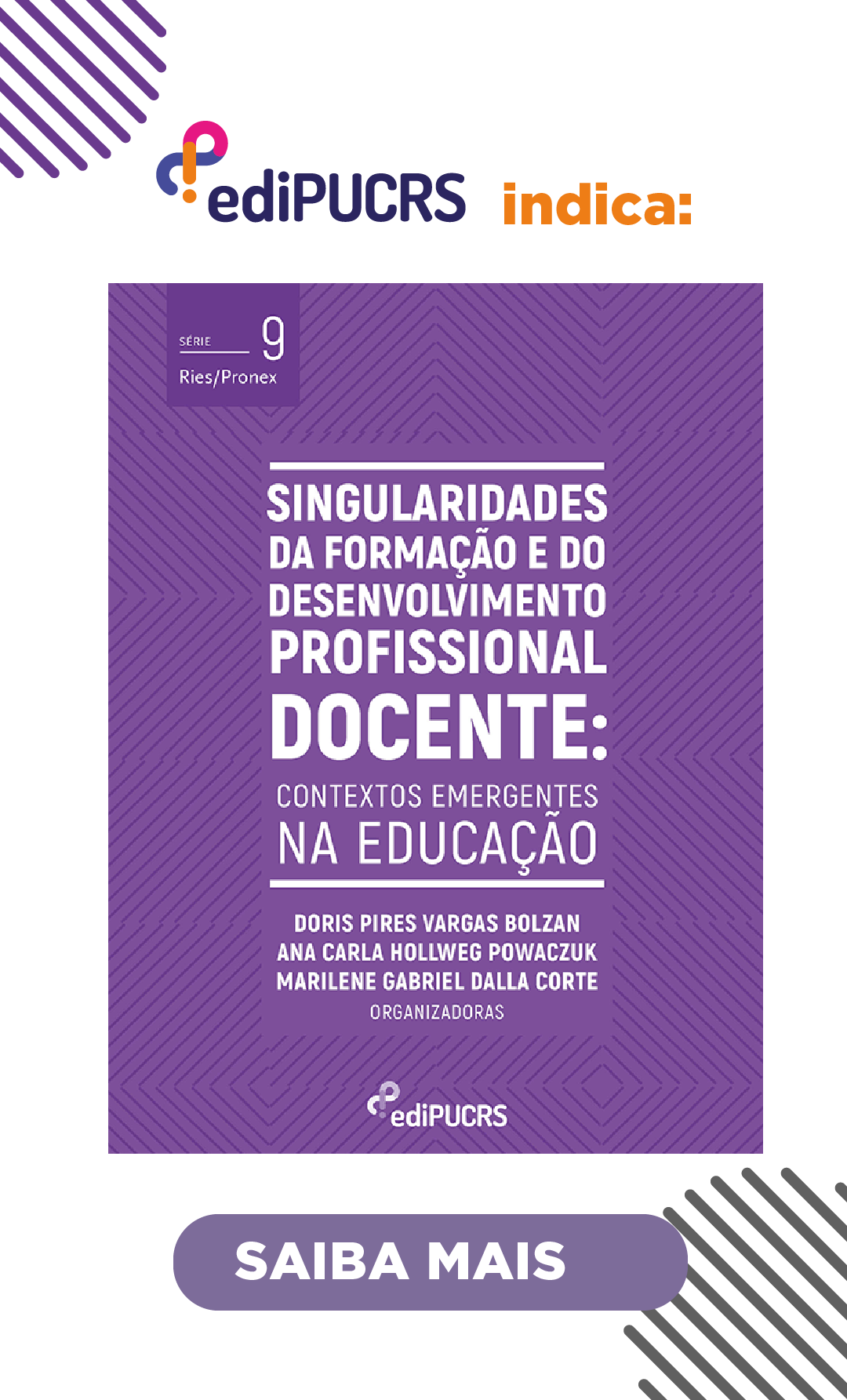Gift and talent
A look at Gagné’s theory
DOI:
https://doi.org/10.15448/2179-8435.2021.1.35339Keywords:
Differentiated Model of Giftedness and Talent, Developmental Model for Natural Abilities, Comprehensive Model of Talent Development, Giftedness, TalentAbstract
The transition from the information to the knowledge society requires teachers to have a set of skills to achieve the social ideal of equality and inclusion. Teachers should meet the needs of gifted and talented students. The Comprehensive Talent Development Model facilitates the identification of gifted and talented students and promotes tools for their development. In this sense, this article aims to present the Integrated Talent Development Model as a new proposal to meet the special needs of gifted students. The methodology proposed by the research is descriptive and explanatory with theoretical references published by written and electronic databases that include books and journals that address current studies on the subject. The main original publications and commentators on IMDT were read and analysed. As a result, it was observed that the need for timely identification of gifted students and the importance of planning constantly challenging activities and of meaningful content that promotes their integral talent development process.
Downloads
References
ABAD, A.; ABAD, T. A escola contemporânea e a violência escolar: um paradigma obsoleto aos alunos com altas habilidades / superdotação. Revista Foco. v. 8, n. 2, 2015. http://doi.org/10.21902/jbslawrev.%20foco.v8i2.211
______. Altas habilidades/superdotação: um olhar para o desenvolvimento cognitivo, ajuste emocional e seus impactos na vida profissional. Revista Foco. v. 9, n. 2, p. 97-119, 2016. http://doi.org/10.21902/jbslawrev.%20foco.v9i2.244
ANGOFF, W. The nature-nurture debate, aptitudes, and group differences. American Psychologist, v. 43, n. 9, p. 713-720, 1988. Disponível em: https://psycnet.apa.org/buy/1989-04059-001
APPADURAI, A. O medo ao pequeno número. Ensaio sobre a geografia da raiva. São Paulo: Illuminuras. 2009.
CORNO, L. The best-laid plans: Modern conceptions of volition and educational research. Educational Researcher, v. 22, n. 2, p. 14-22, 1993. https://doi.org/10.3102%2F0013189X022002014
FREITAS, S. História das Altas Habilidades/Superdotação no Brasil: Políticas e legislação – perspectiva legal do AEE. Santa Maria: Ministério de Educação, Universidade Federal de Santa Maria, 2016.
GAGNÉ, F. From Gifts to Talents: The DMGT as a Development Model. In: STERNBERG, R.; DAVIDSON, J. Conceptions of giftedness. Cambridge: Cambridge University Press, 1986.
______. A proposal for subcategories within the gifted or talented populations. Gifted Children Quarterly, v. 42, n. 2, p. 103-112, 1998. http://doi.org/10.1177/001698629804200203
______. Building gifts into talents: Overview of the DMGT. Canadá: Université du Québec à Montreal, 2008.
______. The DMGT/IMTD Building Talented Outputs Out of Gifted Inputs. In: CALLAHAN, C.; HERTBERG-DAVIS, H. (Eds.). Fundamentals of Gifted Education: considering multiple perspectives. 2ª Ed. Nova York: Routledge, 2013a, p. 55-70.
______. Yes, giftedness (aka “innate” talent) does exist. In: S. B. Kaufman (Ed.): The complexity of greatness: Beyond talent or practice. Oxford, UK: Oxford University Press, 2013b, p. 191-221.
______. From gifts to talent: A DMGT/CMTD perspective. A DMGT/CMTD perspective. Revista de Educação, v. 368, p. 12-37, 2015. https://doi.org/10.4438/1988-592X-RE-2015-368-289
GAGNÉ, F.; MCPHERSON, G. Analyzing musical prodigiousness using Gagné’s Integrative Model of Talent Development. Musical prodigies: Interpretations from psychology, education, musicology and ethnomusicology, v. 1, n. 1, p. 3–114, 2016. http://doi.org/10.1093/acprof:oso/9780199685851.003.0001
GUENTHER, Z. Metodologia Cedet: caminhos para desenvolver potencial e talento. Revista Polyphonía, v. 22, n. 1, p. 83-107, 2011. https://doi.org/10.5216/rp.v22i1.21211
INSTITUTO NACIONAL DE ESTUDOS E PESQUISAS EDUCACIONAIS ANÍSIO TEXEIRA (INEP). Sinopse Estatística da Educação Básica 2019. Brasília: Inep, 2020. Disponível em: http://download.inep.gov.br/informacoes_estatisticas/sinopses_estatisticas/sinopses_educacao_basica/sinopse_estatistica_educacao_basica_2019.zip
MARLAND, S. Education of the gifted and talented. Marland Report. Congress of the United States, 1972.
MARTINS, B. Alunos precoces com indicadores de Altas Habilidades/Superdotação no ensino fundamental I: Identificação e situações (des)favorecedoras em sala de aula. 2013. 239 f. Dissertação (Mestrado em Educação) – Universidade Estadual Paulista Júlio de Mesquita Filho, Marília, SP. 2013. 239 f.
NEGRINI, T. A identificação e a inclusão de alunos com características de AH/SD: discussões pertinentes. Revista Educação Especial, v. 21, n. 32, p. 273-284, 2008. http://doi.org/10.5902/1984686X
ROCHA, A. Altas Capacidades e Sobredotação. Compreender, identificar, atuar. Associação Nacional para o Estudo e Intervenção na Sobredotação (ANEIS), 1ª Ed. 2017. Disponível em: https://www.dge.mec.pt/sites/default/files/EEspecial/guia_sobredotados.pdf
TAILLE, Y.; OLIVEIRA, M.; DANTAS, H. Piaget, Vygotsky, Wallon: teorias psicogenéticas em discussão. São Paulo: Summus, 1992.
VIRGOLIM, A. M. Altas Habilidades/Superdotação: encorajando potenciais. Brasília: Ministério de Educação MEC, SEESP, 2007. Disponível em: http://www.dominiopublico.gov.br/download/texto/me004719.pdf
WORRELL, F. et, al. Gifted Students. Annual Review of Psychology, v. 70, p. 551-576, 2019. https://doi.org/10.1146/annurev-psych-010418-102846
Downloads
Published
How to Cite
Issue
Section
License
Copyright (c) 2021 Educação Por Escrito

This work is licensed under a Creative Commons Attribution 4.0 International License.
Copyright
The submission of originals to Educação Por Escrito implies the transfer by the authors of the right for publication. Authors retain copyright and grant the journal right of first publication. If the authors wish to include the same data into another publication, they must cite Educação Por Escrito as the site of original publication.
Creative Commons License
Except where otherwise specified, material published in this journal is licensed under a Creative Commons Attribution 4.0 International license, which allows unrestricted use, distribution and reproduction in any medium, provided the original publication is correctly cited.





